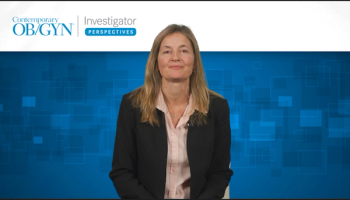
Managing Female Patients With Insomnia
An overview of the different roles of health care professionals in the management of female patients suffering from insomnia.
Episodes in this series

Charlene Gamadelo, MD: Who’s the first stop for many patients suffering from insomnia? In literature, it appears that primary care providers are No. 1. Second is psychiatrists. Then a very far third is some of the other subspecialties: OB-GYN, neurology, pulmonology. The lion’s share of folks are referred from the top 2 pathways or are self-referred. Because of the growing awareness of sleep as a significant component of health, patients are taking it upon themselves to self-refer.
How are patients referred, and what are the ways that we can improve the process? Most patients who come referred, come referred from a primary care provider or a psychiatrist. Typically, they come referred with the question of evaluation of insomnia and treatment of insomnia. There has been an increasing shift toward doing that because there are more options to treat insomnia as it relates to medications. Also, the first-line approach to insomnia is cognitive behavioral treatment intervention, which should be delivered by someone trained in that technique. Referring doctors may want to directly send patients to a sleep provider to designate the appropriate path.
What role do nurse practitioners and physicians play in the armamentarium of sleep providers? We know that the gap between the demand for sleep services is going to increasingly exceed the supply of sleep experts. It behooves us to not only join with a team of specialists who are more likely to be the first to encounter patients with sleep concerns but also to increase our bench, so to speak. One way to increase our bench, in addition to training more sleep specialists, is to bring in this group of providers, nurse practitioners, and physician assistants. They can be quite helpful as part of the team, joining in whatever model works for that sleep program. This can be the evaluation of the patient and treating them, up to the point where they need a doctor to prescribe. In the case of nurse practitioners, it can be done, or they can be selectively part of the workflow so it remains efficient. It may be part of not the evaluation but the ongoing follow-up so, that there’s consistent and ongoing follow-up for the patient and adjustments can be made accordingly.
Transcript Edited for Clarity
Newsletter
Get the latest clinical updates, case studies, and expert commentary in obstetric and gynecologic care. Sign up now to stay informed.







